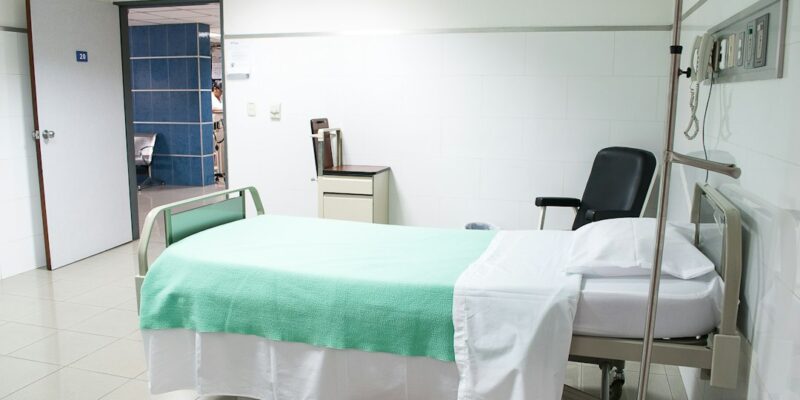
Prioritizing Prevention: The Importance of Physical Health Screenings for Early Detection
In today’s healthcare landscape, there is a growing emphasis on the importance of prevention. Rather than waiting for health issues to arise and then treating them, healthcare professionals are now focusing on early detection and intervention. One of the key tools in this approach is physical health screenings. These screenings are designed to identify potential health issues before they become serious, allowing for early intervention and improved treatment outcomes. In this article, we will explore the role of physical health screenings in healthcare, the benefits of early detection, common screenings for different age groups, factors affecting screenings, overcoming barriers to screenings, integrating screenings into primary care, and the future of physical health screenings.
Key Takeaways
- Prioritizing prevention through physical health screenings is crucial in healthcare
- Physical health screenings play a vital role in early detection of health issues
- Early detection leads to improved treatment outcomes and reduced healthcare costs
- Common physical health screenings include blood pressure, cholesterol, diabetes, and cancer screenings
- Overcoming barriers to physical health screenings requires education, awareness, and community outreach programs.
Understanding Physical Health Screenings
Physical health screenings are medical tests or exams that are performed to detect potential health issues before symptoms appear. These screenings can include a variety of tests, such as blood pressure measurements, cholesterol checks, and cancer screenings. The goal of these screenings is to identify any abnormalities or risk factors that may indicate the presence of a health condition. By detecting these issues early on, healthcare professionals can intervene and provide appropriate treatment or preventive measures.
There are several types of physical health screenings available, depending on the specific health condition being screened for. Some common types include blood pressure screenings, cholesterol screenings, diabetes screenings, and cancer screenings. Each screening has its own set of guidelines and recommendations for when and how often it should be performed. It is important for individuals to consult with their healthcare provider to determine which screenings are appropriate for them based on their age, gender, family history, and other risk factors.
Regular physical health screenings are essential for maintaining good health and preventing the development of serious health conditions. By undergoing these screenings on a regular basis, individuals can catch potential issues early on when they are more easily treatable. This can lead to improved treatment outcomes and a higher quality of life. Additionally, regular screenings can help identify risk factors that may contribute to the development of certain health conditions, allowing individuals to make lifestyle changes or take preventive measures to reduce their risk.
Benefits of Early Detection
Early detection of health issues through physical health screenings can have numerous benefits for individuals and the healthcare system as a whole. One of the primary benefits is the ability to catch potential health issues before they become serious. By identifying these issues early on, healthcare professionals can intervene and provide appropriate treatment or preventive measures. This can lead to improved treatment outcomes and a higher chance of successful recovery.
In addition to improved treatment outcomes, early detection can also help reduce healthcare costs. When health issues are caught early, they are often less expensive to treat than if they were allowed to progress. For example, catching and treating high blood pressure early on can help prevent more serious complications such as heart disease or stroke, which would require more extensive and costly treatment. By investing in regular physical health screenings, individuals and the healthcare system can potentially save money in the long run.
Common Physical Health Screenings
| Screening | Frequency | Age to Start | Benefits |
|---|---|---|---|
| Blood Pressure | At least once a year | 18 years old | Helps detect hypertension and prevent heart disease and stroke |
| Cholesterol | Every 4-6 years | 20 years old | Helps detect high cholesterol and prevent heart disease |
| Diabetes | At least once a year | 45 years old | Helps detect diabetes and prevent complications such as blindness, kidney disease, and amputations |
| Colon Cancer | Every 10 years | 50 years old | Helps detect colon cancer early when it is most treatable |
| Breast Cancer | Every 1-2 years | 50 years old | Helps detect breast cancer early when it is most treatable |
| Cervical Cancer | Every 3-5 years | 21 years old | Helps detect cervical cancer early when it is most treatable |
There are several common physical health screenings that individuals should consider undergoing on a regular basis. These screenings can help detect potential health issues and allow for early intervention. Some of the most common screenings include blood pressure screening, cholesterol screening, diabetes screening, and cancer screenings.
Blood pressure screening is a simple test that measures the force of blood against the walls of the arteries. High blood pressure, or hypertension, is a common condition that can lead to serious health problems such as heart disease and stroke. Regular blood pressure screenings can help identify individuals who may be at risk for these conditions and allow for early intervention.
Cholesterol screening is another important test that measures the levels of cholesterol in the blood. High cholesterol levels can increase the risk of heart disease and stroke. By identifying individuals with high cholesterol levels, healthcare professionals can provide appropriate treatment or lifestyle recommendations to reduce their risk.
Diabetes screening is recommended for individuals who have risk factors for diabetes, such as obesity or a family history of the disease. Diabetes is a chronic condition that affects the body’s ability to regulate blood sugar levels. Early detection and management of diabetes can help prevent complications such as heart disease, kidney disease, and nerve damage.
Cancer screenings are also important for early detection and treatment. There are several types of cancer screenings available, including mammograms for breast cancer, Pap smears for cervical cancer, and colonoscopies for colorectal cancer. These screenings can help detect cancer in its early stages when it is more easily treatable.
Physical Health Screenings for Different Age Groups
Physical health screenings can vary depending on the age group of the individual. Different age groups have different risk factors and health concerns, so it is important to tailor screenings to each individual’s needs. Here are some recommended screenings for different age groups:
For children, regular well-child visits with a healthcare provider are important for monitoring growth and development. These visits often include screenings for vision and hearing, as well as vaccinations to prevent infectious diseases. Additionally, children may undergo screenings for conditions such as lead poisoning or developmental delays.
For adults, there are several important screenings to consider. Blood pressure screening should be done at least once every two years for adults with normal blood pressure. Cholesterol screening is recommended every four to six years for adults with normal cholesterol levels. Diabetes screening should be done every three years starting at age 45, or earlier if there are risk factors present. Cancer screenings such as mammograms, Pap smears, and colonoscopies should be done according to the recommended guidelines based on age and gender.
For seniors, regular physical health screenings become even more important. As individuals age, they may be at increased risk for certain health conditions such as osteoporosis or cognitive decline. Regular screenings for conditions such as osteoporosis, cognitive impairment, and falls can help identify potential issues and allow for early intervention.
Factors Affecting Physical Health Screenings

While physical health screenings are important for early detection and prevention, there are several factors that can affect an individual’s access to these screenings. These factors can include access to healthcare, socioeconomic status, and cultural beliefs.
Access to healthcare is a major factor that can affect an individual’s ability to undergo physical health screenings. In some areas, there may be a lack of healthcare providers or facilities that offer these screenings. Additionally, individuals without health insurance may struggle to afford the cost of screenings or may not have access to preventive care services. This lack of access can result in delayed or missed screenings, which can lead to missed opportunities for early detection and intervention.
Socioeconomic status can also play a role in an individual’s ability to undergo physical health screenings. Individuals with lower incomes may face financial barriers to accessing healthcare services, including screenings. They may also have competing priorities for their limited resources, such as housing or food, which can make it difficult to prioritize preventive care. This can result in delayed or missed screenings, which can have negative consequences for their health.
Cultural beliefs and attitudes towards healthcare can also impact an individual’s willingness to undergo physical health screenings. Some individuals may have cultural beliefs that discourage seeking medical care or that prioritize other aspects of health over preventive care. Additionally, language barriers or lack of cultural competence among healthcare providers can make it difficult for individuals from diverse backgrounds to access and understand the importance of screenings.
Overcoming Barriers to Physical Health Screenings
While there are several barriers that can affect an individual’s access to physical health screenings, there are also strategies and programs in place to help overcome these barriers. Education and awareness campaigns can help increase knowledge about the importance of screenings and encourage individuals to prioritize their health. These campaigns can be targeted towards specific populations or communities that may face additional barriers to accessing screenings.
Financial assistance programs can also help individuals overcome the financial barriers to physical health screenings. These programs can provide subsidies or discounts for screenings, making them more affordable for individuals with limited resources. Additionally, some healthcare providers or facilities may offer free or low-cost screenings as part of community outreach programs.
Community outreach programs can play a crucial role in increasing access to physical health screenings. These programs can bring screenings directly to underserved communities or populations that may face additional barriers to accessing healthcare. By bringing screenings to these communities, individuals are more likely to participate and receive the care they need.
Integrating Physical Health Screenings into Primary Care
One effective way to increase the uptake of physical health screenings is to integrate them into primary care settings. Primary care physicians play a key role in preventive care and can serve as a trusted source of information and guidance for their patients. By incorporating screenings into routine primary care visits, individuals are more likely to undergo these tests and receive appropriate follow-up care.
Integrating physical health screenings into primary care has several benefits. First, it allows for a more comprehensive approach to healthcare, where preventive care is prioritized alongside treatment of acute or chronic conditions. This can help shift the focus from reactive care to proactive care, leading to better health outcomes for individuals.
Second, integrating screenings into primary care can help streamline the process and make it more convenient for individuals. Rather than having to schedule separate appointments for screenings, individuals can have them done during their regular primary care visits. This reduces the burden on individuals and increases the likelihood that they will undergo the necessary screenings.
However, there are also challenges to integrating physical health screenings into primary care. One challenge is the limited time available during primary care visits. Physicians often have limited time with each patient and may not have enough time to discuss and perform all necessary screenings. This can result in missed opportunities for early detection and intervention.
To address this challenge, healthcare systems can implement strategies such as team-based care or the use of technology to streamline the screening process. For example, nurse practitioners or physician assistants can assist with screenings, allowing the primary care physician to focus on other aspects of care. Additionally, the use of electronic health records and reminders can help ensure that screenings are not overlooked or forgotten.
Future of Physical Health Screenings
The future of physical health screenings is promising, with advancements in technology and a focus on personalized screening plans. Technology has the potential to revolutionize the way screenings are conducted and interpreted. For example, wearable devices and mobile apps can allow individuals to monitor their own health parameters and receive real-time feedback. This can help individuals take a more active role in their own health and identify potential issues early on.
Personalized screening plans are also gaining traction as healthcare professionals recognize that one-size-fits-all approaches may not be effective for all individuals. By taking into account an individual’s unique risk factors, genetics, and lifestyle factors, healthcare providers can develop personalized screening plans that are tailored to each individual’s needs. This can help ensure that individuals receive the appropriate screenings at the right time, maximizing the benefits of early detection and intervention.
Continued research and development in the field of physical health screenings is essential for improving the effectiveness and accessibility of these tests. Ongoing research can help identify new biomarkers or risk factors that may be useful in screening for certain conditions. Additionally, research can help refine existing screening guidelines and recommendations to ensure that they are evidence-based and up-to-date.
In conclusion, physical health screenings play a crucial role in prioritizing prevention in healthcare. By detecting potential health issues early on, individuals can receive appropriate treatment or preventive measures, leading to improved outcomes and reduced healthcare costs. There are several common physical health screenings that individuals should consider undergoing on a regular basis, including blood pressure screening, cholesterol screening, diabetes screening, and cancer screenings. These screenings can vary depending on the age group of the individual, with different recommendations for children, adults, and seniors. However, there are several factors that can affect an individual’s access to physical health screenings, including access to healthcare, socioeconomic status, and cultural beliefs. Strategies such as education and awareness campaigns, financial assistance programs, and community outreach programs can help overcome these barriers. Integrating physical health screenings into primary care settings can also increase uptake and ensure that individuals receive the necessary care. The future of physical health screenings looks promising, with advancements in technology and a focus on personalized screening plans. Continued research and development in this field is essential for improving the effectiveness and accessibility of these tests. Overall, prioritizing prevention through physical health screenings is crucial for maintaining good health and preventing the development of serious health conditions.
FAQs
What are physical health screenings?
Physical health screenings are medical tests and exams that are conducted to detect any potential health issues or diseases in an individual. These screenings can include blood tests, imaging tests, and physical exams.
Why are physical health screenings important?
Physical health screenings are important because they can help detect health issues early on, before they become more serious and harder to treat. Early detection can lead to better outcomes and can even save lives.
Who should get physical health screenings?
Physical health screenings are recommended for everyone, regardless of age or gender. However, certain screenings may be more important for certain age groups or individuals with specific risk factors.
What are some common physical health screenings?
Common physical health screenings include blood pressure checks, cholesterol tests, mammograms, colonoscopies, and skin cancer screenings. The specific screenings recommended for an individual may vary based on their age, gender, and medical history.
How often should physical health screenings be done?
The frequency of physical health screenings can vary based on an individual’s age, gender, and medical history. It is important to discuss screening recommendations with a healthcare provider to determine the appropriate screening schedule.
Are physical health screenings covered by insurance?
Many physical health screenings are covered by insurance, but coverage can vary based on the specific screening and the individual’s insurance plan. It is important to check with the insurance provider to determine coverage.


















